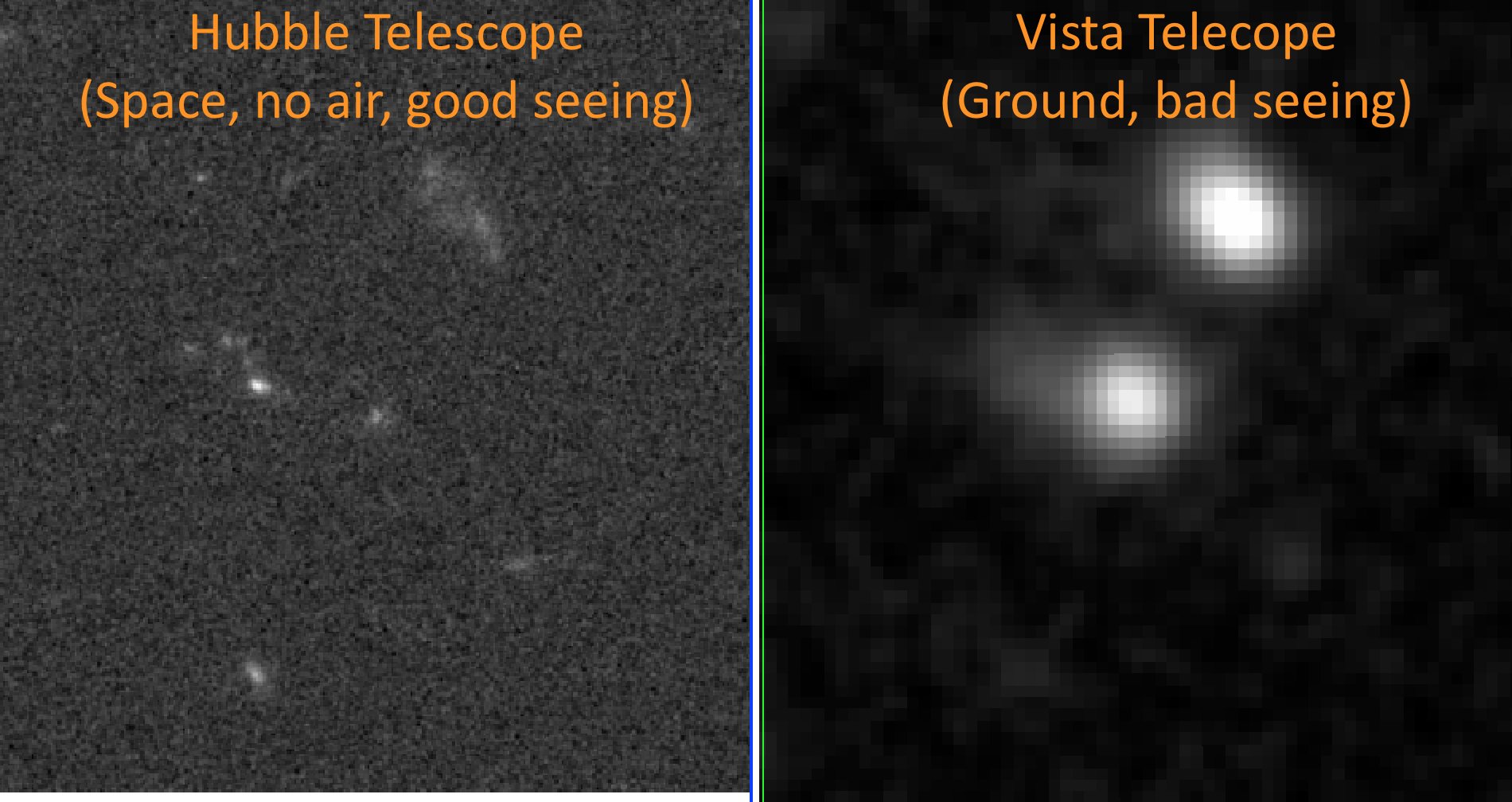
Overview
A huge amount of data will be collected by the next generation of observational facilities in the 2020s. The various facilities (JWST, LSST, WFIRST, Euclid, CASTOR, etc) will provide data for a of wavelengths from the ultra-violet to the near-infrared and at various depths and resolutions (space vs. ground-based). Usually the photometry of objects from these missions is combined on a catalog-by-catalog basis. However, it is shown that the simultaneous processing of these data lead to more robust measurements.
The goal of the Joint Survey Processing team led by IPAC is to provide tools that allow the simultaneous processing of these data. Furthermore, its goal is to create an environment, which allows the user to perform analysis in real time on them. The Joint Processing efforts are in the broader context of IPAC's Tech-Initiative, which aims to provide a science platform from which scientists from all over the world can access these data efficiently. It is closely connected to the existing archives at IPAC such as NED and IRSA. We currently test approaches and develop prototype applications to create such an environment using data from the 2-deg2 COSMOS field. The later has been imaged at similar resolutions and wavelengths and therefore provides an important testbed.
My Contribution
I am leading the development of tools to measure the photometry of extra-galactic objects across different wavelengths at different resolution using on our data on COSMOS. Furthermore, I help designing and testing online science platforms to run these tools.
More on this topic:
JSP Webpage JSP Astro2020 White Paper
